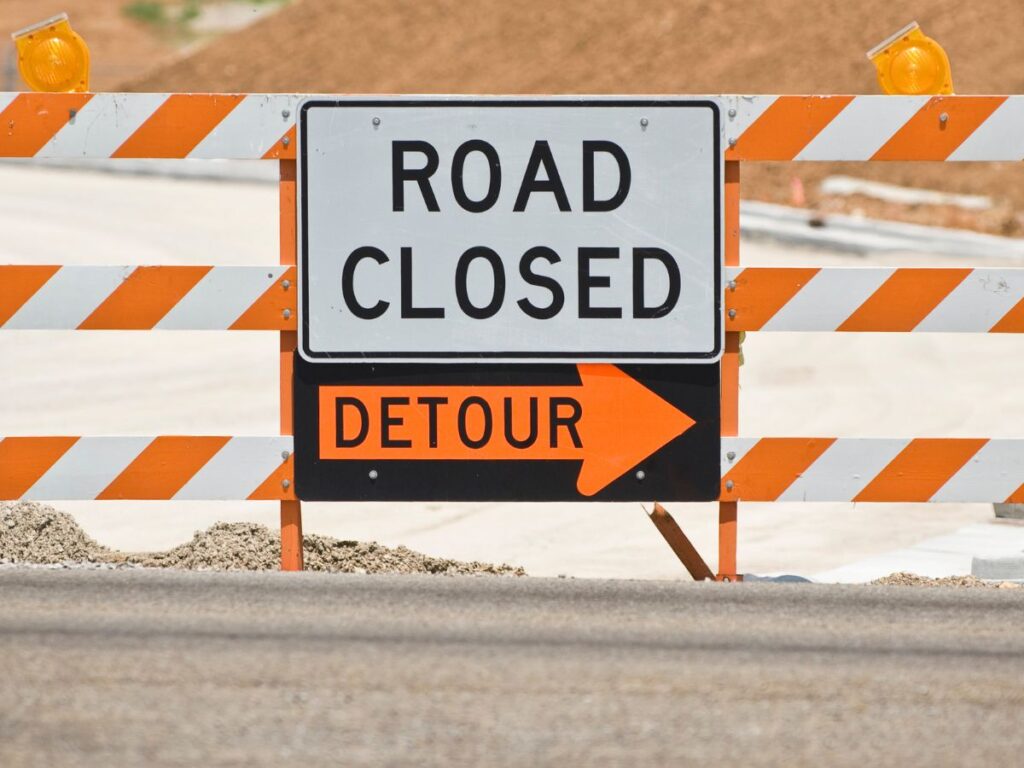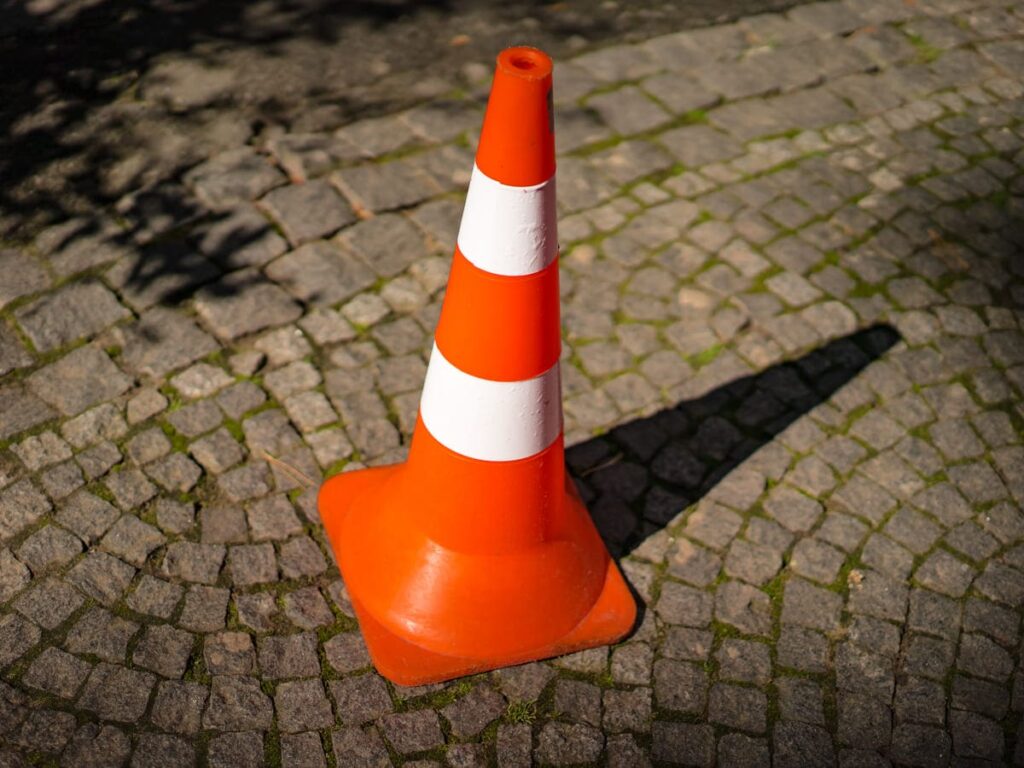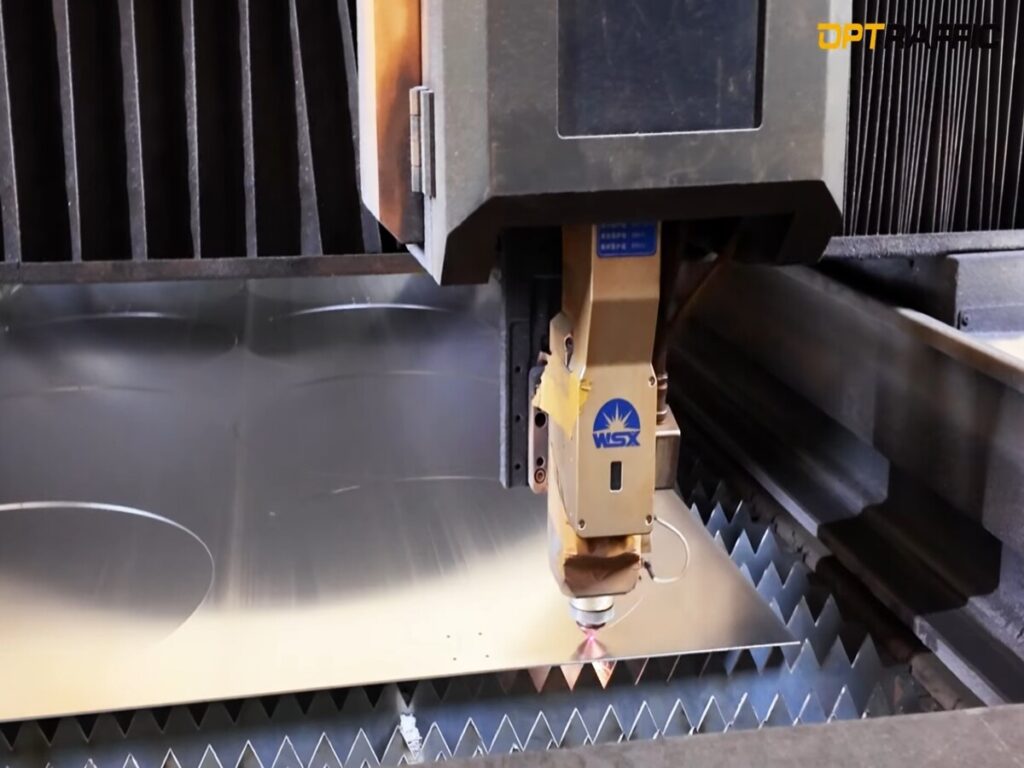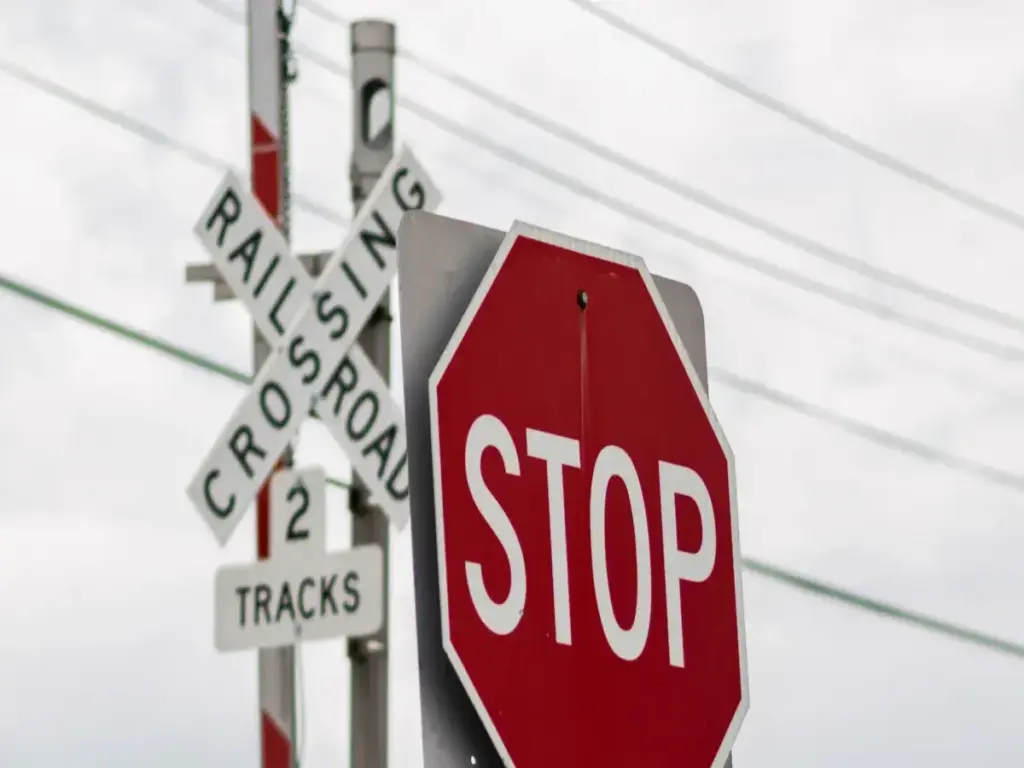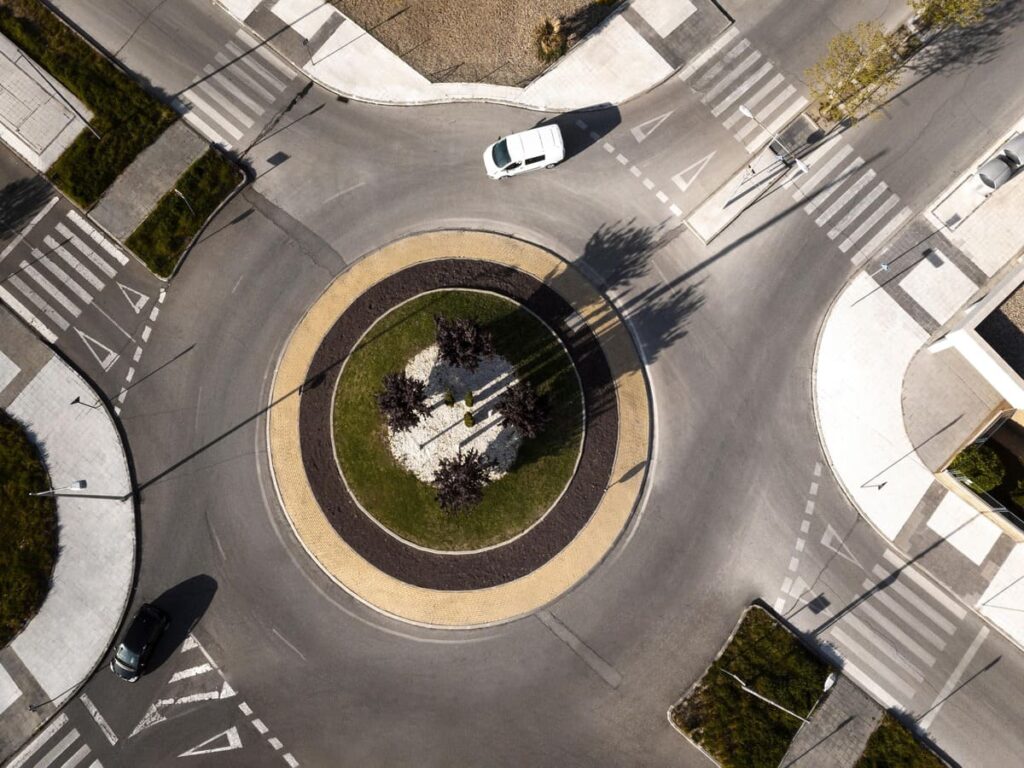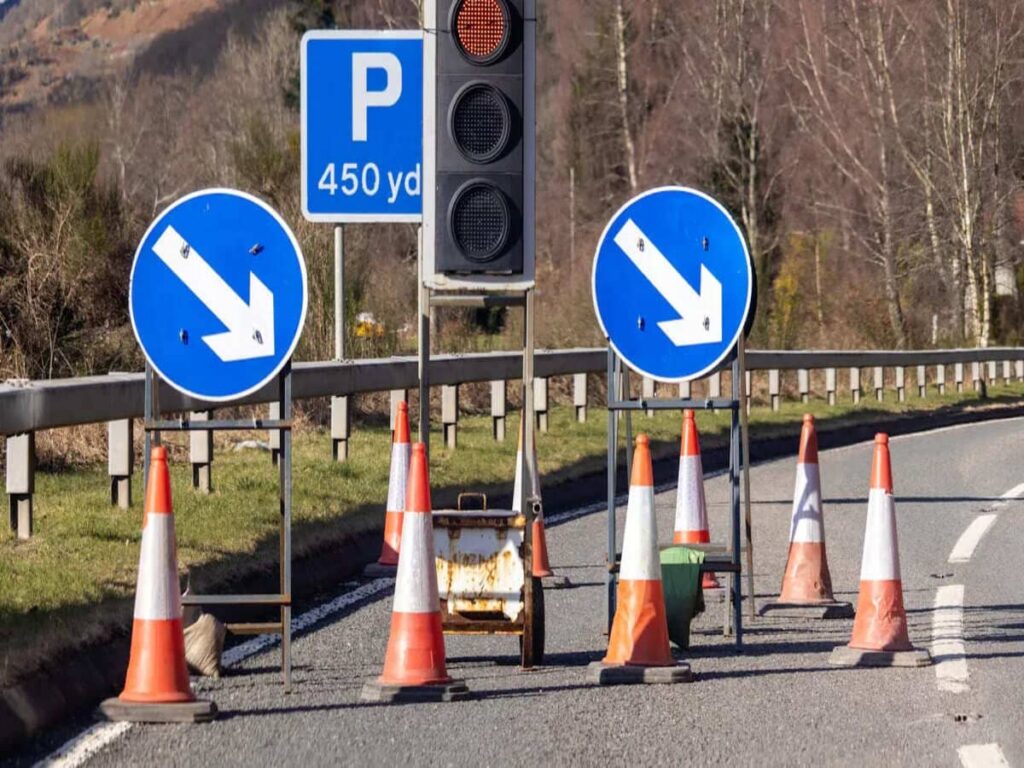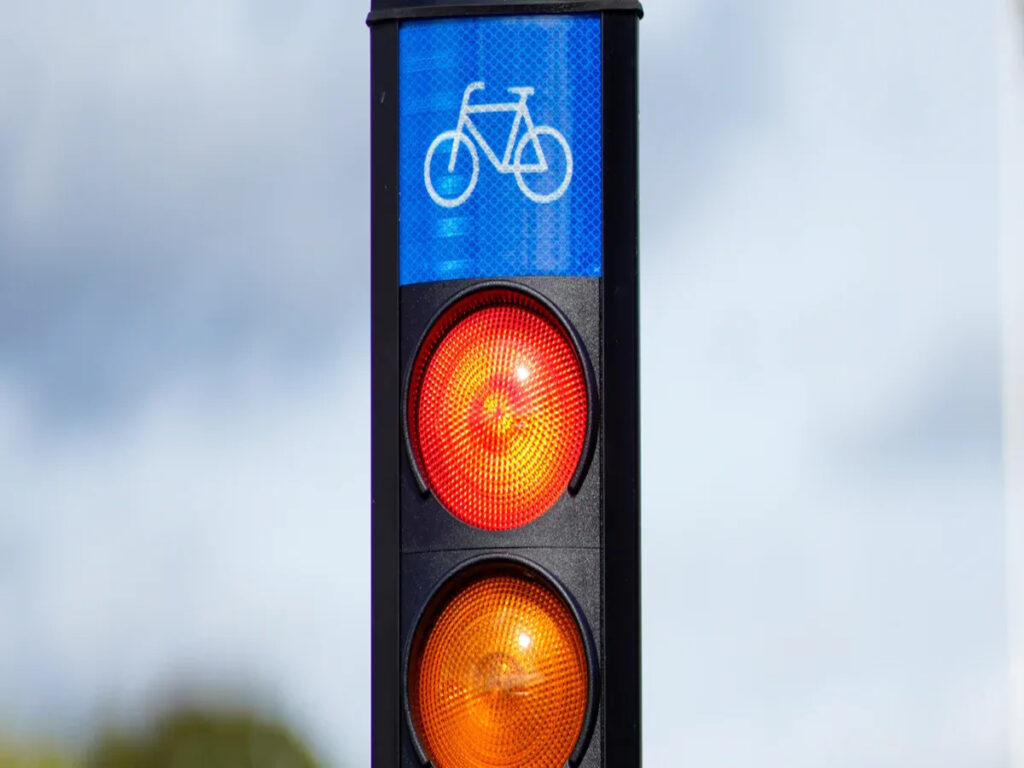
Cruzamentos são locais comuns para acidentes de carro e lesões de pedestres. Dispositivos de canalização inteligentes com Tecnologia v2i pode ajudar a resolver esses problemas. Esses dispositivos usam comunicação especial para controlar o tráfego e ajudar as pessoas a cruzar com segurança.
Os testes mostram esses dispositivos de canalização cortados de interseção por até 60%. Eles também fazem os motoristas pararem com mais frequência, Com cidades como Miami e São Francisco, vendo uma melhoria de 13 a 46%. Em Minnesota, Os motoristas seguem os limites de velocidade 20% mais, E parando em cruzamentos de bloqueio médio subiu 24%. Essas melhorias tornam os interseções mais seguros para todos.
OPTRÁFEGO permanece na vanguarda das tendências de segurança do trânsito, Ficando de olho em tecnologias emergentes como dispositivos canalizados de V2i-INFLIENTES. À medida que as cidades adotam soluções de tráfego mais inteligentes, Continuamos comprometidos em fornecer produtos de segurança de trânsito de alta qualidade que suportam cruzamentos mais seguros e melhor controle de tráfego.
Takeaways -chave
- Dispositivos inteligentes usam a tecnologia para tornar os cruzamentos mais seguros. Eles se ajustam às mudanças de tráfego rapidamente, mantendo as estradas seguras para todos.
- Cidades usando a tecnologia V2i têm menos acidentes. Alguns lugares relatam até 60% Menos acidentes em cruzamentos.
- Esses dispositivos conversam com carros e sistemas de tráfego, Compartilhando atualizações rapidamente. Isso ajuda os motoristas a permanecer seguros e reduz os engarrafamentos.
- Ferramentas inteligentes, como cones LED e amarelos protegidos. Eles alertam os motoristas e gerenciam o acesso a carros em pontos lotados.
- Manter dispositivos inteligentes atualizados é muito importante. Verificações remotas e atualizações de software ajudam -as a funcionar bem e permanecer confiáveis.
Compreendendo dispositivos de canalização inteligentes
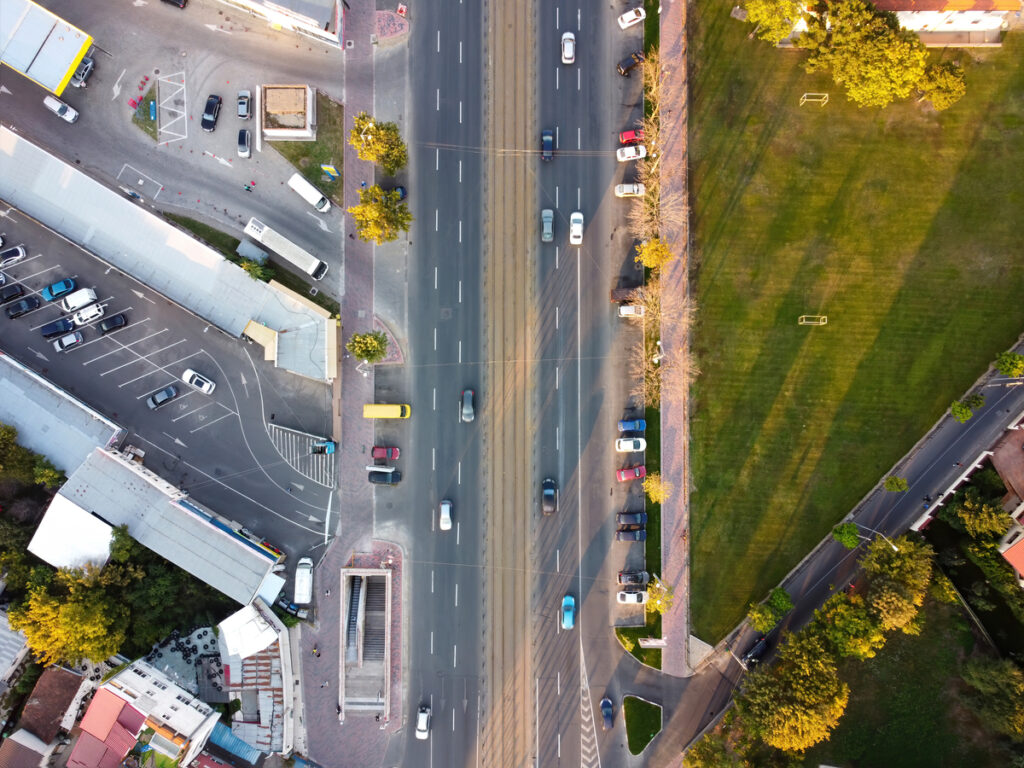
O que são dispositivos de canalização inteligentes?
Dispositivos de canalização inteligentes são ferramentas que tornam os cruzamentos mais seguros. Eles são melhores do que cones ou barreiras regulares porque usam a tecnologia. Esses dispositivos se ajustam às mudanças de tráfego em tempo real. Eles conversam com carros e sistemas de trânsito para ajudar motoristas e caminhantes. Pense neles como ajudantes inteligentes para estradas.
Esses dispositivos têm recursos como luzes brilhantes, sensores, e sinais sem fio. Por exemplo, Um cone inteligente pode piscar para avisar sobre o perigo. Um poste de amarração pode descer para deixar os veículos de emergência passarem. As cidades usam essas ferramentas para tornar as estradas mais seguras e o tráfego mais suave.
Tipos de dispositivos: Cones de tráfego LED dinâmico, Bollards de estrada inteligente, e mais.
Existem diferentes tipos de dispositivos de canalização inteligentes para vários usos. Alguns comuns incluem:
- Cones LED dinâmicos: Esses cones de segurança de trânsito têm luzes que piscam ou mudam de cor. Eles marcam faixas ou alertam os motoristas sobre mudanças temporárias na estrada.
- Bollards inteligentes: Esses postos de trânsito podem subir ou para baixo automaticamente. Eles controlam quais veículos podem entrar em determinadas áreas, como zonas de pedestres.
- Sinais de pedestres interativos: These work with traffic lights to help people cross streets safely. They may use sounds or flashing lights to get attention.
- Modular Barriers: These road barriers can be moved or changed remotely. They are helpful during construction or emergencies to redirect traffic.
Each device has a special job to make roads safer. Junto, they create a smart system for managing traffic.
How they differ from traditional static devices.
Regular safety cones and barriers stay in one place and don’t change. They only do one job, like marking a construction zone. They can’t adjust to traffic or warn drivers about speeding.
Smart channelizing devices are different because they adapt. They use sensors to detect cars and people. They send updates to traffic systems in real-time. Por exemplo, Um amarelo -amarelo se move para baixo quando uma ambulância vem. Um cone de segurança de LED dinâmico pisca mais rápido se detectar carros em alta velocidade.
Esses dispositivos inteligentes são muito melhores do que os regulares. Eles não apenas guiam o tráfego - ajudam a interromper acidentes. Mudar para ferramentas inteligentes pode tornar os interseções mais seguros e mais eficientes.
Tornando os cruzamentos mais seguros com a tecnologia V2I
Como a comunicação V2I ajuda a gerenciar melhor o tráfego
A comunicação v2i ajuda carros e estradas a compartilhar informações. Isso torna o tráfego mais suave e as interseções mais seguras. Por exemplo, Os sistemas v2i enviam alertas sobre limites de velocidade ou perigos da estrada para os carros. Essas atualizações ajudam os motoristas a fazer escolhas mais inteligentes e evitar engarrafamentos de trânsito.
Cidades nos EUA. tiveram ótimos resultados com sistemas V2I. Aqui estão alguns exemplos:
| Cidade/área | Melhorias alcançadas |
|---|---|
| Nova York | 470 dispositivos adicionados; Grande queda na poluição do carro. |
| Tampa Bay, Flórida | 30% tempos de viagem mais rápidos para motoristas. |
| Wyoming | 50% velocidades mais lentas em mau tempo; 400% Mais relatórios de estradas. |
Esses exemplos mostram como o V2I torna as estradas mais seguras e o tráfego melhor para todos.
Trabalhando com semáforos e botões de pedestres
Os dispositivos V2I trabalham com semáforos para melhorar a segurança. Imagine uma luz ficando vermelha por mais tempo para que as pessoas possam atravessar com segurança. Ou sinais piscantes ligando quando os carros estão acelerando. Os botões de pedestres também podem conversar com os dispositivos V2I para ajudar os caminhantes a se cruzar com segurança.
Em San Diego, Um projeto de teste mostrou como isso funciona. Sobre 3 quilômetros de estradas, Os dispositivos V2I enviaram mensagens sobre zonas lentas e perigos da estrada. Grupos como Caltrans e Sandag ajudaram com este projeto. Ele mostrou como o V2I melhora os semáforos e mantém as pessoas seguras.
Melhorias de segurança da tecnologia V2I
A tecnologia V2i tornou as interseções muito mais seguras. Dá atualizações em tempo real para motoristas e caminhantes, cortando acidentes. Por exemplo, em Wyoming, Carros com V2I diminuíram a velocidade 50% em mau tempo. Em Tampa Bay, motoristas gastos 30% Menos tempo preso no trânsito, reduzindo o estresse.
Em San Diego, Um novo projeto está adicionando cuspido (Fase de sinal e tempo) mensagens. Isso fará com que os semáforos funcionem ainda melhor. Essas mudanças mostram como o V2I pode tornar as estradas mais seguras para todos.
V2I Mecanismos de Comunicação e Controle
Visão geral dos protocolos V2I: IEEE 802.11p e C-V2x
A comunicação v2i usa dois sistemas principais: IEEE 802.11p e C-V2X PC5. Esses sistemas ajudam carros e estradas a compartilhar dados para melhorar a segurança. Cada sistema tem seus próprios benefícios.
- C-V2X PC5 pode enviar dados mais longe, Ótimo para longas distâncias.
- IEEE 802.11p Funciona mais rápido no tráfego leve, Ajudando decisões rápidas.
Aqui está uma tabela mostrando suas diferenças:
| Protocolo | Intervalo de comunicação | Latência em cenários de baixa densidade |
|---|---|---|
| C-V2X PC5 | Mais longo | Mais devagar |
| IEEE 802.11p | Mais curto | Mais rápido |
IEEE 802.11p usa um método chamado CSMA para enviar mensagens. Mas durante o tráfego movimentado, Pode desacelerar. C-V2X PC5 Lida melhor com o tráfego intenso com seu design avançado.
Como os dados fluem de sensores para atuação do dispositivo
Dispositivos inteligentes em cruzamentos precisam de fluxo de dados suave para funcionar bem. Sensores Verifique as condições de tráfego como a velocidade do carro, pessoas atravessando, ou tempo. Esta informação vai para um sistema que a analisa e envia comandos.
Por exemplo, Se um carro estiver acelerando, O sistema faz um cone de tráfego LED flash rapidamente para avisar o motorista. Se alguém pressionar um botão de cruzamento, O sistema mantém a luz vermelha mais longa para a segurança. Tudo isso acontece em segundos, mostrando como esses dispositivos são rápidos e precisos.
Algoritmos de controle adaptativo para condições de tráfego dinâmico
Algoritmos de controle adaptativo ajudam a gerenciar melhor o tráfego. Eles alteram as ações do dispositivo com base em dados em tempo real para manter o tráfego seguro e suave. Estudos mostram que eles reduzem engarrafamentos e tempos de espera.
Um estudo testou um algoritmo que mudou os tempos de luz verde com base no tráfego e clima. Cortou os tempos de espera por 65.3% comparado aos sistemas antigos. Outro estudo usou aprendizado inteligente para melhorar os sinais de trânsito, Tornando as linhas mais curtas e o fluxo de tráfego melhor.
Com controle adaptativo, Dispositivos inteligentes se ajustam a mudanças como horas de rush ou mau tempo. Isso mantém os cruzamentos seguros e o tráfego em movimento eficientemente.
Aplicações do mundo real e estudos de caso
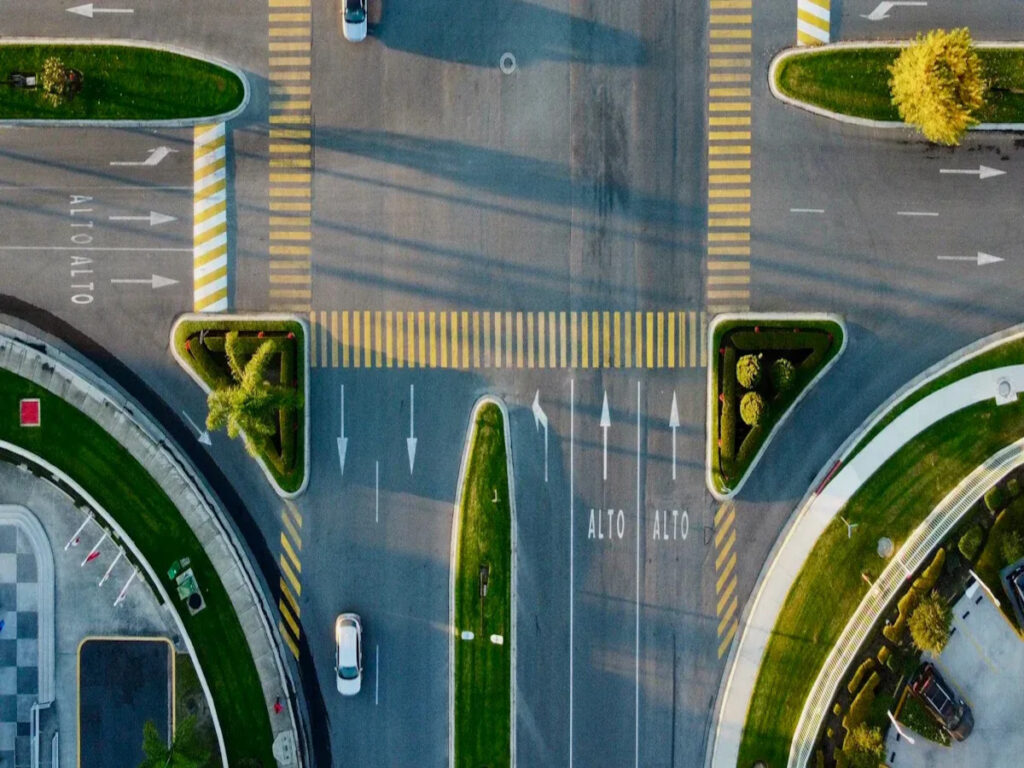
Exemplos de dispositivos inteligentes na vida real
Os dispositivos de canalização inteligentes estão sendo testados em muitas cidades. Esses testes mostram como eles tornam as estradas mais seguras e o tráfego melhor. Em Phoenix, Arizona, Cones LED piscantes foram usados em cruzamentos ocupados. Os cones mudaram suas luzes com base nas velocidades do carro, Ajudando os motoristas a desacelerar. Em Boston, Bollards inteligentes foram colocados perto das escolas. Eles caíram durante o horário escolar para ônibus e voltaram para bloquear outros carros.
Em Austin, Texas, Barreiras modulares foram usadas durante um grande festival. As barreiras ajudaram a orientar o tráfego e mantiveram as pessoas seguras. Esses exemplos mostram como os dispositivos inteligentes funcionam em lugares diferentes. Eles tornam os cruzamentos mais seguros e organizados.
Partes do sistema: Rsus, sensores, e plataformas em nuvem
Dispositivos inteligentes precisam de várias peças para funcionar bem. Unidades na estrada (Rsus) são como mensageiros. Eles enviam e recebem dados entre carros, semáforos, e sistemas de controle. Os sensores também são muito importantes. Eles verificam coisas como velocidade do carro, pessoas atravessando, e clima. Esses dados em tempo real ajudam o sistema a fazer escolhas rápidas.
As plataformas em nuvem são onde todos os dados são armazenados e estudados. Quando um sensor percebe a velocidade, A nuvem envia um comando. Pode dizer a um cone de LED para piscar mais rápido ou manter um sinal vermelho mais tempo. Este trabalho em equipe mantém o tráfego em movimento e torna as estradas mais seguras.
Resultados: Menos acidentes, melhor tráfego, e pessoas mais felizes
Os resultados desses projetos são impressionantes. Em Phoenix, Crashes apareceram 40% Depois de usar cones LED. Em Boston, 25% Mais pessoas se sentiram seguras perto das escolas por causa dos postes inteligentes. O tráfego de Austin se moveu 30% melhor durante o festival, com menos atrasos.
Pessoas também gostam desses dispositivos. Os motoristas acham os cones de tráfego LED e as barreiras úteis. Os caminhantes se sentem mais seguros com sinais que os ajudam a atravessar as ruas. Com menos acidentes, tráfego mais suave, e usuários felizes, Dispositivos inteligentes são um ótimo complemento para os sistemas de tráfego.
Superando os desafios de implantação
Soluções de energia: VS movido a energia solar. Sistemas com fio
Escolher a fonte de energia certa é muito importante. Existem duas opções principais: sistemas movidos a energia solar ou com fio. Dispositivos movidos a energia solar usam a luz solar, que é ecológico e economiza dinheiro ao longo do tempo. Eles funcionam melhor em lugares ensolarados e não precisam muito de grades de energia. Mas eles podem precisar de baterias para continuar trabalhando à noite ou em dias nublados.
Sistemas conectados conectam -se diretamente à eletricidade. Eles dão poder constante, tornando -os ótimos para áreas ou lugares movimentados com pouca luz solar. A instalação de sistemas com fio pode custar mais, Mas eles não dependem de baterias ou se preocupam com o mau tempo. A melhor escolha depende das necessidades do cruzamento e dos recursos disponíveis.
Estratégias de resistência à prova de intempéries e de resistência vandal
Dispositivos inteligentes devem lidar com mau tempo e vandalismo. Para durar mais tempo, Eles são feitos com forte, Materiais à prova de intempéries. Dispositivos com altas classificações de IP, Como IP67, pode bloquear poeira e água. Isso os torna bons para uso ao ar livre em condições difíceis.
Para parar o vandalismo, Os dispositivos podem ter capas difíceis e designs à prova de violação. Alguns até têm alarmes ou câmeras para assustar vândalos. Adicionar esses recursos mantém seus dispositivos seguros e funcionando bem por um longo tempo.
Manutenção e atualizações: Diagnósticos remotos e atualizações de firmware
Cuidar de dispositivos inteligentes é mais fácil com ferramentas remotas. Diagnósticos remotos permitem que você verifique se há problemas sem estar lá. Por exemplo, Se um sensor quebrar, O sistema envia um alerta imediatamente. Isso ajuda a corrigir problemas mais rapidamente e reduz o tempo de inatividade.
Atualizações de firmware mantêm os dispositivos em execução com a mais recente tecnologia. Essas atualizações melhoram como os dispositivos funcionam e os fazem combinar com novos sistemas V2X. Cuidados e atualizações regulares garantem que seus dispositivos de controle de tráfego permaneçam eficientes e confiáveis.
Os dispositivos de canalização inteligentes habilitados para V2i estão mudando como as interseções funcionam. Essas ferramentas se ajustam ao tráfego em tempo real, cortando acidentes e ajudando pedestres. As cidades que os usam têm menos acidentes e fluxo de tráfego mais suave.
🚦 Dica: Pense nesses dispositivos como ferramentas para estradas mais seguras. Eles não apenas guiam carros - eles param de acidentes e salvam vidas.
O futuro é emocionante. Esses dispositivos se conectarão com carros autônomos e sistemas inteligentes. Interseções de imagem onde carros, sinais, E as pessoas trabalham juntas. Isso tornará as estradas mais seguras e inteligentes para todos.
Perguntas frequentes
O que é vrus, E por que isso importa para a segurança?
Vrus significa usuários de estrada vulneráveis como caminhantes, motociclistas, e Scooter Riders. Essas pessoas estão em maior risco em cruzamentos. Spotting VRUs ajuda os sistemas inteligentes a se concentrar em mantê -los seguros usando sensores e ferramentas de tráfego inteligente.
Como a tecnologia de veículo a infraestrutura torna os cruzamentos melhores?
Esta tecnologia permite que carros e sistemas de tráfego compartilhem informações instantaneamente. Ele muda de sinais e recursos de segurança com base no tráfego, Ajudando as VRUs a ficarem seguras e fazendo com que os cruzamentos funcionem melhor.
Dispositivos inteligentes podem encontrar vrus facilmente?
Sim, Dispositivos inteligentes usam sensores e programas inteligentes para identificar VRUs. Eles notam caminhantes, motociclistas, e Scooter Riders e ajuste os sinais para mantê -los seguros.
Como a comunicação V2X melhora os sistemas de tráfego?
V2X vincula carros, estradas, e sistemas de trânsito juntos. Reage rapidamente às mudanças, Tornando as estradas mais seguras e cortando engarrafamentos.
Os dispositivos inteligentes podem funcionar em todas as áreas da cidade?
Sim, Os dispositivos inteligentes atendem às diferentes necessidades da cidade. Eles se ajustam ao tráfego, clima, e vrus, tornando -os ótimos para todos os tipos de interseções.

